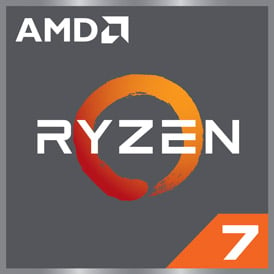 Estimated results for PassMark CPU Mark
Estimated results for PassMark CPU Mark
|
|
AMD Ryzen 7 4700GE
8C 16T @ 3.1 GHz
|
20250
|
|
|
AMD Ryzen 7 4800HS
8C 16T @ 2.9 GHz
|
18680
|
 Geekbench 5, 64bit (Multi-Core)
Geekbench 5, 64bit (Multi-Core)
|
|
AMD Ryzen 7 4800HS
8C 16T @ 2.9 GHz
|
7608
|
|
|
AMD Ryzen 7 4700GE
8C 16T @ 3.1 GHz
|
6978
|
 Geekbench 6 (Multi-Core)
Geekbench 6 (Multi-Core)
|
|
AMD Ryzen 7 4800HS
8C 16T @ 2.9 GHz
|
7240
|
|
|
AMD Ryzen 7 4700GE
8C 16T @ 3.1 GHz
|
6361
|
 Cinebench R20 (Multi-Core)
Cinebench R20 (Multi-Core)
|
|
AMD Ryzen 7 4700GE
8C 16T @ 3.1 GHz
|
4425
|
|
|
AMD Ryzen 7 4800HS
8C 16T @ 2.9 GHz
|
3847
|
 iGPU - FP32 Performance (Single-precision GFLOPS)
iGPU - FP32 Performance (Single-precision GFLOPS)
|
|
AMD Ryzen 7 4700GE
8C 16T @ 3.1 GHz
|
2048
|
|
|
AMD Ryzen 7 4800HS
8C 16T @ 2.9 GHz
|
1433
|
 Cinebench R15 (Multi-Core)
Cinebench R15 (Multi-Core)
|
|
AMD Ryzen 7 4700GE
8C 16T @ 3.1 GHz
|
1927
|
|
|
AMD Ryzen 7 4800HS
8C 16T @ 2.9 GHz
|
1712
|
 Geekbench 6 (Single-Core)
Geekbench 6 (Single-Core)
|
|
AMD Ryzen 7 4800HS
8C 16T @ 2.9 GHz
|
1565
|
|
|
AMD Ryzen 7 4700GE
8C 16T @ 3.1 GHz
|
1521
|
 Geekbench 5, 64bit (Single-Core)
Geekbench 5, 64bit (Single-Core)
|
|
AMD Ryzen 7 4700GE
8C 16T @ 3.1 GHz
|
1217
|
|
|
AMD Ryzen 7 4800HS
8C 16T @ 2.9 GHz
|
1147
|
 Cinebench R15 (Single-Core)
Cinebench R15 (Single-Core)
|
|
AMD Ryzen 7 4700GE
8C 16T @ 3.1 GHz
|
200
|
|
|
AMD Ryzen 7 4800HS
8C 16T @ 2.9 GHz
|
197
|
